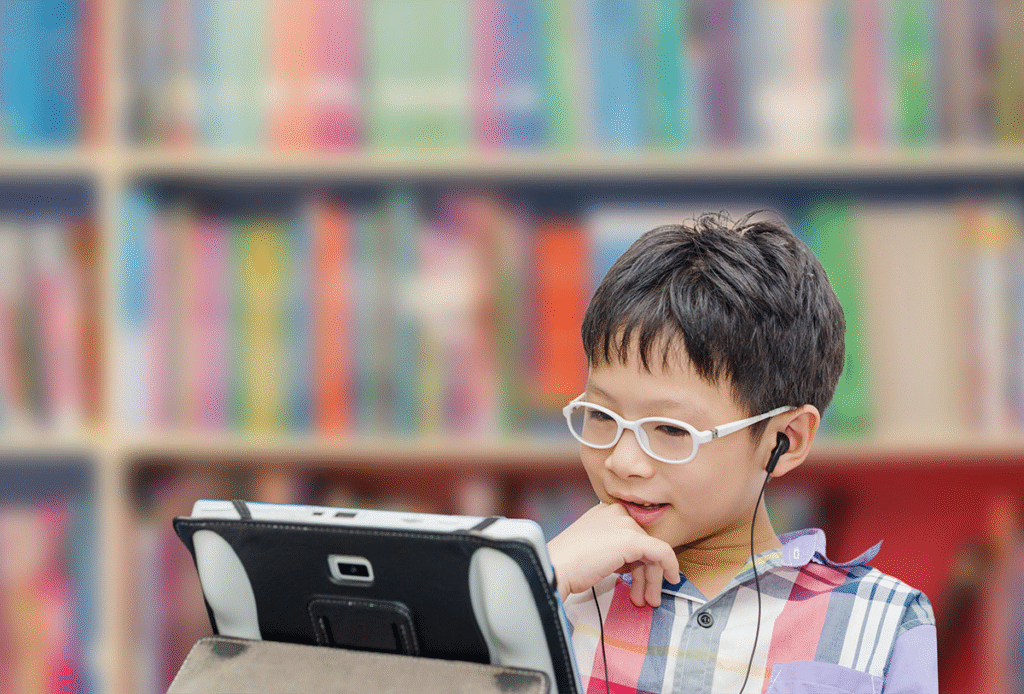The application of game-design elements in educational contexts to increase student engagement. Gamification in learning is the use of game-like elements such as points, badges, levels, and rewards in educational settings. It turns lessons into engaging experiences by using competition, challenges, and feedback. The goal is to motivate students and make learning more fun and interactive.
Imagine earning points for solving a math problem or unlocking a new level by finishing your homework. Learning doesn’t have to be boring anymore! Gamification is changing classrooms by bringing the excitement of games into education.
Gamification helps students stay focused and eager to learn. Many teachers use apps and online tools to gamify lessons. It can improve problem-solving skills and teamwork in both kids and adults. When learning feels like a game, students often do better.
What is Gamification in Learning?
Gamification in learning refers to the use of game elements and principles in educational environments to make learning more engaging and enjoyable. These elements may include points, levels, badges, leaderboards, and rewards, which motivate learners by tapping into their natural desires for competition, achievement, and recognition.
The goal of gamification is not to turn learning into a game but to make it more interactive and fun. When students feel like they’re playing rather than just studying, they become more motivated to participate, retain information better, and develop problem-solving skills through active involvement.
What is Gamification in Learning?
Gamification in learning is the use of game-like elements in non-game environments such as classrooms or online courses. It includes features like points, badges, leaderboards, and levels to make learning more engaging. This approach increases motivation and keeps students interested in the subject matter. It turns traditional lessons into fun, interactive experiences.
Benefits of Gamification
- Boosts Motivation: Rewards and recognition keep learners engaged.
- Encourages Participation: Students are more likely to take part in class.
- Improves Retention: Game-based learning helps learners remember better.
- Fosters Healthy Competition: Leaderboards encourage effort and improvement.
Key Elements of Gamified Learning
- Points and Badges: Earned through completing tasks or quizzes.
- Levels and Progress Bars: Show how far the learner has come.
- Challenges and Quests: Add excitement and purpose to learning.
- Immediate Feedback: Helps students understand and correct mistakes.
How to Implement Gamification in Learning
- Choose Game Elements – Pick tools like points or leaderboards.
- Design Fun Activities – Make learning tasks engaging and interactive.
- Track Progress – Use visuals or dashboards to show growth.
- Reward Achievements – Offer digital or physical rewards for milestones.

Benefits of Gamification in Education
By introducing challenges and rewards, students are more likely to stay focused, complete tasks, and strive for better performance. It also fosters a sense of accomplishment and encourages positive behavior through immediate feedback and progress tracking.
Moreover, gamification can support diverse learning styles by allowing learners to progress at their own pace and giving them control over their learning journey. It can also encourage collaboration and healthy competition among peers, which enhances social interaction and teamwork skills.
Increases Student Engagement
Gamification captures students’ attention and keeps them motivated throughout the learning process. When lessons feel like games, learners become more excited and willing to participate. This increased engagement leads to better focus and improved retention of information.
Encourages Active Participation
Instead of passively absorbing information, learners interact with content through challenges, points, and rewards. This fosters a sense of involvement and accountability.
Promotes Collaboration and Teamwork
- Multiplayer games or group-based challenges promote peer-to-peer interaction.
- Students learn to cooperate, communicate, and solve problems together.
- It builds a supportive classroom atmosphere where teamwork is valued.
- Collaboration often boosts confidence and social skills among learners.
Provides Instant Feedback and Motivation
- Students receive immediate results, helping them correct mistakes quickly.
- Feedback systems such as badges or points reward effort and progress.
- This instant recognition keeps learners motivated to improve.
- Teachers can use data from games to identify learning gaps efficiently.

Examples and Applications of Gamification
Gamification has been successfully implemented in various learning platforms and classroom settings. For example, educational apps like Duolingo use levels, achievements, and streaks to encourage daily practice and language retention. Similarly, platforms like Kahoot and Quizizz turn quizzes into competitive games to make assessments more exciting.
Teachers can also design their own classroom-based games, such as earning badges for completing assignments or reaching milestones. These methods not only make lessons more interesting but also create a supportive environment where students feel encouraged to take risks and learn from their mistakes.
Gamification in Education
Apps like Duolingo reward users with points and levels. This encourages daily practice and builds a habit. Teachers also use badges and leaderboards in classrooms. It keeps students motivated and focused on progress.
Gamification in Corporate Training
- Points and badges are awarded for completing tasks.
- Leaderboards create a healthy sense of competition.
- Story-based challenges keep employees engaged.
- Feedback and rewards improve retention and motivation.
Gamification in Marketing
- Loyalty programs offer points for purchases.
- Spin-the-wheel promotions encourage interaction.
- Challenges and quizzes boost brand engagement.
- Gamified apps promote customer referrals and sharing.
Gamification in Health and Fitness
- Apps like Fitbit reward users for daily step goals.
- Streaks motivate people to maintain regular workouts.
- Virtual challenges help users compete with friends.
- Badges and milestones mark important fitness progress.
- These features turn health into a fun, daily mission.
Conclusion
Gamification is transforming education by making learning more dynamic and learner-centered. Through the use of game-based strategies, students become more motivated and actively involved in the educational process, which leads to better understanding and long-term retention of knowledge.
When applied thoughtfully, it can create a fun, inclusive, and effective learning experience for students of all ages and backgrounds.
